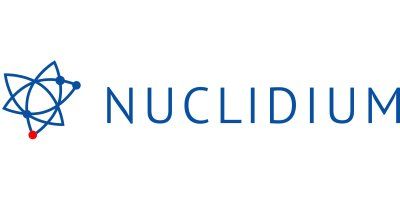

- Home
- Companies
- Nuclidium AG
- Products
- Nuclidium CuTrace - Platform for ...
Nuclidium CuTrace - Platform for Targeted Radiotherapy and Diagnostics
Nuclidium AG leverages the unique properties of copper radionuclides to advance precision radiotherapy and diagnostics. Their proprietary CuTrace™ platform combines copper nuclides with tumor-specific molecules, creating diagnostic and therapeutic pairs designed to optimize the safety and efficacy profile in cancer treatment. These radionuclides, including 61Cu for diagnostics and 67Cu for therapeutics, are integral in developing highly precise cancer-targeting methods. The platform features several advantageous properties such as favorable dosimetry, high imaging quality, and reduced radiation burden, which are crucial in detecting small metastases. Furthermore, the efficient production and supply chain of these copper-based radiopharmaceuticals enhance treatment accessibility worldwide, as no nuclear reactors are required, and radioactive waste is minimized. Nuclidium AG is pioneering innovations that elevate the standards for precision in oncology.
Leveraging the unique properties of copper radionuclides in combination with tumour-specific molecules to maximise precision, performance and accessibility of targeted radiotherapy and diagnostics
Optimizing Radiopharmaceuticals to Fight Cancer
Our proprietary CuTrace™ platform utilises the unique properties of copper radionuclides in combination with tumour-specific molecules to create therapeutic and diagnostic pairs with an improved safety and efficacy profile, favourable economics and a wide distribution radius.
- Precision
The combination of indication-specific targeting molecules and advantageous radiation properties of copper nuclides enable highly precise tumour targeting copper nuclide half-life sufficient to allow delayed imaging, a critical technique for the detection of small, distant metastases - Performance
Unique radiochemical properties of our copper radionuclides enable excellent imaging quality and anti-tumour-efficacy as well as low radiation burden for the patient - Accessibility
Improved, proprietary manufacturing and broad supply network overcome current limitations at highly advantageous economics:
Reliable supply & easily available raw materials
low-cost and scalable production
Increased distribution radius,
Flexible and easy-to-use
Reduced radioactive waste
We combine precise cancer-targeting molecules with either a diagnostic radionuclide (61Cu) or a therapeutic radionuclide (67Cu) to create highly safe and effective diagnostic and therapeutic pairs (theranostics) for a range of cancer indications with high medical need.
- Targeted Radiotheranostics: Radionuclide, linker and ligand
- Radionuclide – a copper radiometal positron emitter with the radiation either responsible for the image in a PET scan (diagnostic, 61Cu) or the destruction of tumour cells (therapeutic, 67Cu)
- Linker – binds the radionuclide to the ligand
- Ligand – binds selectively to tumour-specific surface proteins
In a Therapeutic
In a Diagnostic
What is the difference between a diagnostic and a therapeutic radionuclide?
A reliable production and supply network is key to delivering transformational radiopharmaceutical products to patients globally. That is why we have focused from the beginning on securing these core pillars of our business to maximize the accessibility of our products. With this approach we can address the main challenges in manufacturing and supply that are currently limiting the targeted radiotherapy and diagnosis to reach its full potential.
Key benefits include:
- Low-cost and easily accessible raw materials
- Reduced radioactive waste burden
- No nuclear reactor needed
- Short production time, lower equipment needs
- Increased distribution radius
